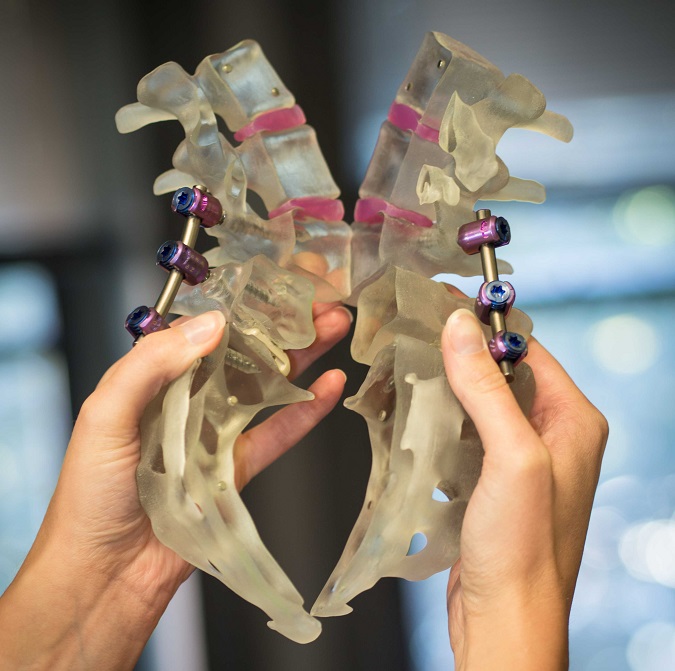|
Follow the links below to learn more about:
|
| BIOMODEL.COM | Quick links: Order a Model | Request a Quote | Send Scan Data |

| Home > Applications > Medical: Surgery & Prosthetics | Dentistry | Engineering | Education | Forensics | Art |
|
Surgeons and prosthetists use our custom Biomodels for preoperative planning, surgical rehearsal, and patient-specific implant production. By helping to illuminate solutions to challenges encountered during surgery, biomodels can significantly reduce operating room time, thus reducing both trauma to the patient and financial costs. Surgeons employ biomodels to visualize disturbed or abnormal anatomy in cases of trauma, congenital defects, and tumor resections. Physicians also use biomodels to fabricate prostheses for correcting such anatomical defects. |
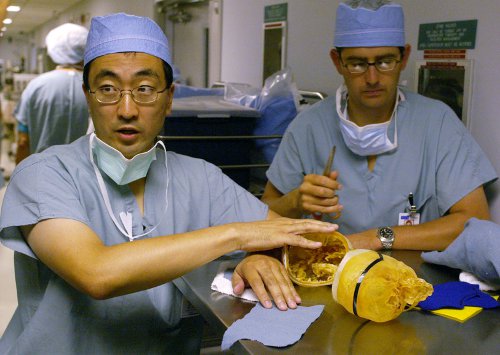
Craniofacial fellow and plastic surgery resident prepare for complex surgery with biomodel. Photo: Courtesy of Scott Qintard, UCLA. |
Pre-operative Planning
Biomodels have proven to be valuable tools in the
successful planning and performing of complex
surgical procedures, including:
|
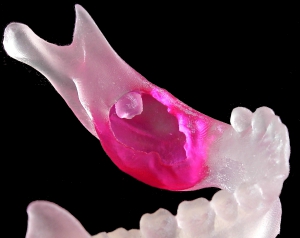
Biomodel of lower jaw with tumor in red. |
Effective CommunicationBiomodels are valuable tools for communication, which can be crucial when a surgical team includes members of different specialties collaborating on a complex procedure. Doctors can also use biomodels that help illustrate medical conditions and procedures to facilitate effective communication with their patients. >> Click for a video about how our models helped in complex surgery on a pair of conjoined twins. |
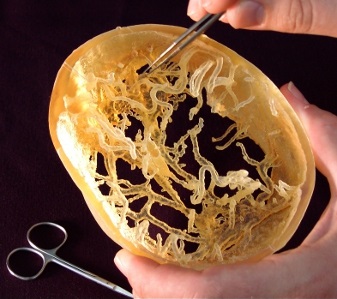
Biomodel of conjoined twins neurovasculature. |
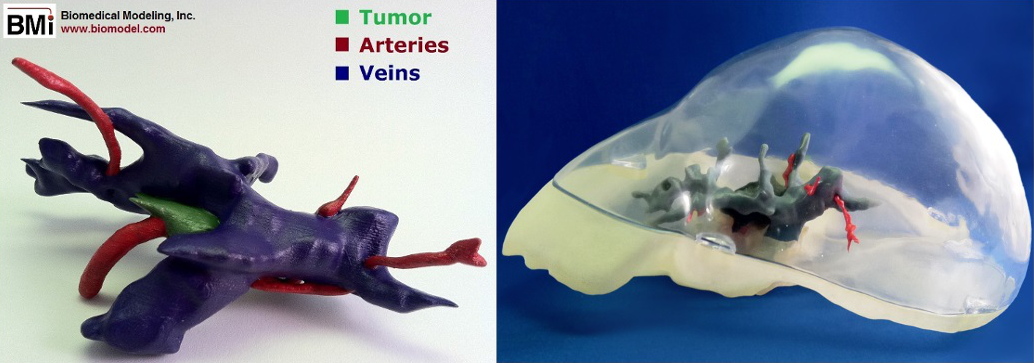
Biomodel assembly for surgical evaluation of tumor resection from liver.
Left: Close-up of removable unit showing tumor mass and surrounding blood vessels.
Right: Assembled model of vasculature unit within liver.
Patient-Specific ImplantsBiomodels also play an important role in anaplastology and craniofacial reconstruction. Biomodels are used as molds or templates for producing patient-specific prosthetic implants. >> See more examples in our model gallery. |

Biomodel template and implants for cranioplasty. |

Biomodel progression of creating a custom hand prosthesis from mirrored data of 3D scanned patient anatomy.
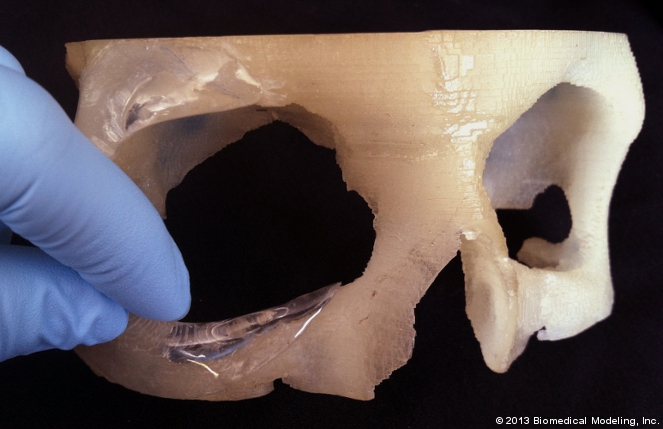
Template for patient-specific orbital implant.

